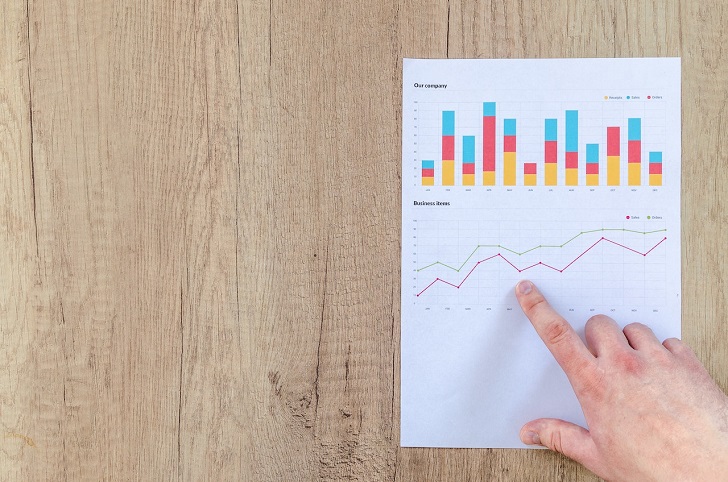
The Sell Signal: What it Means, How it Works, and Examples

Understanding when to buy and sell assets is crucial for successful trading and investing in financial markets. While buying signals often receive more attention, the importance of sell signals should not be underestimated. A sell signal is a critical indicator that suggests it may be time to exit a position or consider selling an asset.
In this article, we will explore what sell signals mean, how they work, and provide real-world examples to help you navigate the complex landscape of financial markets.
What Is a Sell Signal?
A sell signal is a trigger or indicator that suggests an investor or trader should consider selling a specific asset. It is a warning sign that the asset’s price may decline or that the current market conditions are not conducive to holding the position any longer. Sell signals can be generated by various sources, including technical analysis, fundamental analysis, and quantitative models.
How Does a Sell Signal Work?

Lukas/ Pexels | A high relative strength index is a key sell signal for investors. A
Sell signals analyze data and market conditions to identify an investment’s potential weaknesses or downside risks. Here are some common methods and indicators used to generate sell signals:
Technical Analysis
Technical analysis involves studying price charts and patterns to make trading decisions. Several technical indicators can generate sell signals, such as:
- Moving Averages: When a shorter-term moving average crosses below a longer-term moving average, it can signal a potential downtrend and serve as a sell signal.
- Relative Strength Index (RSI): An RSI value above 70 is often considered overbought, indicating a potential reversal and a sell signal. Conversely, an RSI below 30 can be seen as oversold and may trigger a buy signal.
- Bearish Candlestick Patterns: Patterns like the “evening star” or “bearish engulfing” can indicate a potential trend reversal and signal a sale.
Fundamental Analysis:
Fundamental analysis evaluates a company’s financial health and performance. A deteriorating financial outlook, declining revenue, or negative news can serve as sell signals for stocks.
Quantitative Models:
Quantitative models use mathematical algorithms and data to generate signals. These models can analyze vast amounts of information, such as price history, trading volume, and economic indicators, to identify potential sell signals.
Examples of Sell Signals

Liza Summer/ Pexels | The key to making money in stocks is not to get scared out of them
Moving Average Crossover
Let’s say you are monitoring the stock of Company XYZ. You notice that the 50-day moving average has crossed below the 200-day moving average. This crossover is a classic sell signal, suggesting that the stock’s short-term momentum has turned bearish. Traders and investors may consider selling their positions or taking a more cautious approach.
RSI Overbought Signal
Imagine you are trading cryptocurrencies, and the RSI for Bitcoin reaches a value of 80. This indicates that Bitcoin is overbought and may be due for a correction. Traders who use RSI as a sell signal might decide to sell some or all of their Bitcoin holdings in anticipation of a price decline.
Negative Earnings Surprise
You hold shares of Company ABC, and the company releases its quarterly earnings report. The earnings per share (EPS) significantly missed analyst expectations, and revenue growth stagnated. This fundamental data can be a strong sell signal, suggesting that the company’s financial health is deteriorating, and the stock may face headwinds.

Andrea Piacquadio/ Pexels | The goal of a trader is to be wrong as little as possible
Quantitative Model Output
You manage a diverse portfolio, including stocks, bonds, and commodities. Your quantitative model considers various economic indicators and historical data and generates a sell signal for a specific commodity due to anticipated supply disruptions. This signal prompts you to reduce your exposure to that commodity to mitigate potential losses.
More in Crowd Funding
-
`
Are House Prices Going Down in Orange County in 2024?
In June 2024, Orange County saw a notable shift in its real estate landscape. This leads many to wonder if house...
August 14, 2024 -
`
What Are Specified Investment Products? SIPs Explained
Navigating the world of investing can be complex, especially when it comes to Specified Investment Products (SIPs). These financial instruments often...
August 7, 2024 -
`
Why Leonardo DiCaprio Never Dated Kate Winslet: The Iconic Duo’s Relationship Update
It has been 25 years since Titanic’s release, a film that has left an indelible mark on the hearts of audiences...
July 29, 2024 -
`
How to Start Your Own Private Bank
Starting your own private bank might sound challenging, but with the right planning and execution, it’s entirely feasible. The benefits of...
July 23, 2024 -
`
Nvidia Stock Now Continues to Drop After Bull Run: What Went Wrong?
After a period of massive growth, Nvidia’s stock is now experiencing a significant drop in value. This California-based software company, known...
July 17, 2024 -
`
Is Kevin O’Leary Conservative? Analyzing His Policies
Kevin O’Leary, the renowned chairman of O’Leary Financial Group, has set the political stage abuzz with his recent announcement. On Wednesday, he...
July 8, 2024 -
`
The Staggering Net Worth of “Twilight” Star Taylor Lautner
Taylor Lautner’s net worth is a topic that often intrigues fans and industry watchers alike. Known for his iconic role in...
July 1, 2024 -
`
Tyson Foods Boycott 2024 – The Role of Bots in the Movement
Have you ever scrolled through social media and seen a hashtag blow up overnight? It happens all the time, but in...
June 25, 2024 -
`
Here’s How Nonprofits Make Money
Donations and Grants The most obvious answer to “how do nonprofits make money” is through donations. Individuals, businesses, and foundations contribute...
June 19, 2024














You must be logged in to post a comment Login